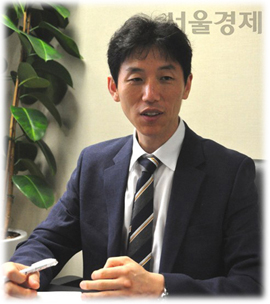| 일 | 월 | 화 | 수 | 목 | 금 | 토 |
|---|---|---|---|---|---|---|
| 1 | 2 | 3 | 4 | 5 | ||
| 6 | 7 | 8 | 9 | 10 | 11 | 12 |
| 13 | 14 | 15 | 16 | 17 | 18 | 19 |
| 20 | 21 | 22 | 23 | 24 | 25 | 26 |
| 27 | 28 | 29 | 30 |
- Cohesion Force
- political organization
- Value Systems
- Political power
- Order of Choice
- survival process theory
- politics of Inner Circle
- Mathematical Model of political science
- Political Regime
- the 3rd Law of politics
- mechanism of politics
- Differences in Individual Abilities and Tendencies
- politics
- Samjae Capacities
- the 2nd law
- Canonical Politics
- Political Change
- Task Delegates of the Ruler: Inner Circle
- Power
- political phenomena
- Operation of the 2nd Law
- politics and war
- Regime Change
- new political science
- Political Regimes
- power and organization
- Orderliness of Choice
- Mathematical Model of politics
- 1st Law of politics
- Samjae Capacity
- Today
- Total
New Political Science
a. ㉡ Regime Change Force 본문
㉡ Regime Change Force[Ch.3.305]
Regime change force( \( \vec{H} \) ) refers to the profit obtained when a rule system(i.e., political regime) changes, which is the regime change profit. Since people always choose the option with the highest profit[Ch.1.5], this profit becomes various political forces that attempt to change the political regime. In other words, regime change force is a force that aims to change the regime. An example of regime change force attempting to change the politics (i.e., regime) of a company is the antitrust lawsuit filed by the U.S. Department of Justice against Microsoft in 1996, which aimed to split the company. This is an example of regime change force that seeks to change the (political) regime of that company.
Regime change force is the sum of demands from each faction. Each faction makes political demands in order to achieve profit within their given situation(profit equilibrium condition). For example, in late 19th- century America, when silver became much more plentiful than gold, Western politicians who were heavily indebted to Eastern bankers demanded a change in currency from gold to silver in order to inflate currency values and reduce their debt. Conversely, bankers made opposing demands. The sum of these demands constitutes the regime change force of that era.
The regime change force arises from the difference between the profit equilibrium condition and the current rule system. The profit equilibrium condition reflects the best possible relationship between parties, but if the relationship defined by the rule system differs from this, social efficiency decreases and more people suffer losses. For example, if a local government in Korea in the 21st century maintains a system where even simple documents require a visit to the local government office to obtain, the system is highly inefficient, and many people will have to bear unnecessary losses. Consequently, those who seek to expand their profits will seek to establish new rules and may try to change the local government's ordinances to establish online issuance of documents.
Regime change force arises from accumulated losses or potential expected profit. If losses are accumulating due to the current rule system, people may tolerate them for a while, but they will not do so if the accumulated losses exceed a certain threshold. The accumulated losses in this case are the expected profit that will be gained if the rule system changes. The potential expected profit is proportional to the accumulated losses up to the present. In most cases, treating both factors as equal values should not pose any problems in understanding political change. Thus, accumulated losses are equivalent to potential expected profit.
Regime change force is proportional to social change rate and time. In other words, the greater the social change rate i.e., the faster the society changes, and the longer the time period, the greater the regime change force becomes. Medieval Europe is an example of a society with a low social change rate where regime change force did not arise. From the fall of the Roman Empire to before the 16th century, knowledge, technology, and culture developed or changed very little in medieval Europe to the extent that inflation remained low. Due to this, the political regime at the macro- level of medieval Europe, the feudal system, remained unchanged for a long time.
In addition, regime change force is also proportional to the regime duration period(T)[Ch.3.304]. This can be understood geometrically by referring to [Diag.3.C.2] above. Regime change force( \( \vec{H} \)) represents the vertical L-value change on the orthogonal coordinate plane, while the regime duration period represents the horizontal t-value change. The speed of social change is indicated by the slope of the curve. If we define the average slope of the entire curve as the speed of social change, then the change in L-value can be calculated by multiplying the average slope of the curve by the change in t-value. In other words, when rapid social change persists over a long period of time, the resulting change in social conditions becomes more significant, and generally, the regime change force increases as the regime duration period(T) increases. This is because even small changes can accumulate and eventually lead to significant changes over time.
'Mechanism of Politics' 카테고리의 다른 글
| a. ㉣ Regime Change Cost (0) | 2023.12.14 |
|---|---|
| a. ㉢ Profit Equilibrium Condition and Profit Equilibrium Flow (0) | 2023.12.14 |
| a. Explanation of Key Concepts of the 3rd Law (0) | 2023.12.14 |
| (2) Interpretation and Examples of the 3rd Law (0) | 2023.12.14 |
| b. Formulation of the 3rd Law (0) | 2023.12.14 |
